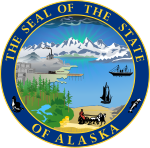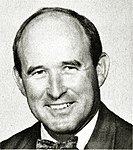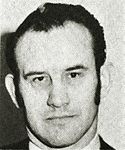This article relies largely or entirely on a single source. (February 2020) |
| |||||||||||||||||||||||||
| |||||||||||||||||||||||||
 Results by state house district Sheffield: 30–40% 40–50% 50–60% 60–70% 70–80% 80–90% Fink: 30–40% 40–50% 50–60% 60–70% | |||||||||||||||||||||||||
| |||||||||||||||||||||||||
| Elections in Alaska |
|---|
 |
The 1982 Alaska gubernatorial election took place on November 2, 1982, for the post of Governor of Alaska. To replace outgoing Republican governor Jay Hammond, Democratic nominee Bill Sheffield defeated three opponents: Republican nominee Tom Fink, Libertarian nominee Dick Randolph and Alaskan Independence Party nominee Joe Vogler. Hammond had endorsed his lieutenant governor, Terry Miller, who lost the Republican nomination to Fink in the primary election, as did Don Wright. Sheffield defeated Steve Cowper and former Lieutenant Governor H. A. Boucher for the Democratic nomination.
As of 2023, this is the earliest gubernatorial election in Alaska in which at least one candidate, Dick Randolph, is still living. Randolph was one of the few third party candidates in Alaska's history to have served in office, serving two terms as a Libertarian in the state house before running for governor. Randolph, as a member of a political party not recognized by the state, gained access to the ballot via a nominating petition. He garnered nearly fifteen percent of the vote, to date the highest percentage received by any Libertarian Party gubernatorial candidate. His running mate, Donnis Thompson, who was married to the mayor of the Kenai Peninsula Borough, was the only woman on a statewide ballot in this year's elections, as well as one of the first in Alaskan history.


